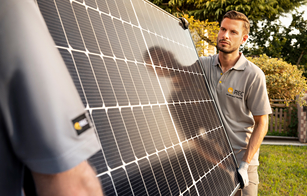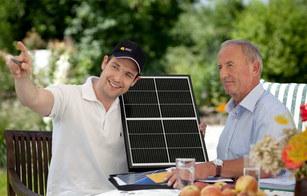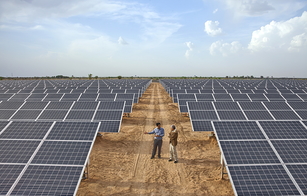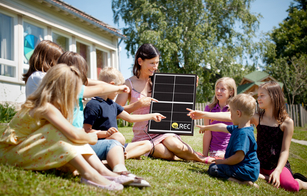REC Alpha Pure: Leading the solar industry to a more sustainable future
All the same, we should be grateful and rightly proud of achieving the changes since the 1980s that cut the use of and exposure to lead in our daily lives. That said, lead is a commonly found element in the environment and cutting it out of our lives completely is practically impossible.
Why the drive to cut lead?
Lead is a toxic heavy metal that is soluble in certain environments. Its toxicity to humans and animals has long been known making it a key topic for environmental protection for many years. The high presence of lead in an organism can lead to decreased growth and reproduction and cause neurological effects in vertebrates, including brain damage and behavioral problems.
While you are not going to sit down and eat a plate of lead for your evening meal, the danger comes from inadvertent ingestion via our food and drink. Whereas the inhaling of particles in the air or from leaded paint flakes was a major cause of lead poisoning a few decades ago, nowadays, the main danger is through lead making its way into soils and sediments and then into our food, or through the direct discharge of waste from industrial activities into water bodies.

What has this got to do with solar?
Lead actually provides excellent conduction properties that make it ideal for soldering electrical connections. However, the wider electronics industry has removed lead from all household appliances due to regulations, which we will come onto in a bit, replacing it with other, less harmful substances. This means that you can be sure your home is practically free of lead, despite all the soldering found in televisions, radios, refrigerators, cell phones etc.
However, lead and other toxic substances such as cadmium are commonly used in the PV industry and can be found in almost all solar panels manufactured today. In fact, solar panels are currently excluded from the regulations that control the use of lead in other electronic appliances, meaning that panels using silicon wafers, which make up >90 % of the market, can contain around 24 grams of lead in a panel that weighs ~20 kg (0.85 oz over ~44 lbs panel weight). This is mainly found in the soldered joints in the connectors, junction box, and interconnections as well as in the cell metallization.
None of this is a major concern as long as the panel remains intact, but it is at the end of a panel’s life that things get critical. Multiply the 24 grams above by the amount of solar panels being manufactured globally … in 2021 alone, around 460 million solar panels were produced worldwide, meaning that a few decades into the future, the 2021 production alone is set to add more than 11,000 tons of lead to the ecosystem – and the market is growing!
In perspective:
~24 grams lead/panel
~460 million panels produced in 2021
>11,000 tons of lead added to ecosystem based on 2021 production alone!
How a panel is treated at the end of its service life is what determines the environmental impact of any toxic substances used in its manufacture: negligent disposal of a solar panel can cause lead leakage into the ecosystem, putting our food chain in danger. Despite recent steps forward in various regions that regulate the recycling of solar panels, the disposal of a panel and its constituent substances is something the wider industry still has to get to grips with.
What regulations control hazardous substances?
First introduced by the European Union in 2002, the Regulation of Hazardous Substances Directive (RoHS) limits and controls the use of 10 different hazardous and toxic substances in electrical products. Having gone through a number of revisions, RoHS was significantly updated through 2011/65/EU and to EU/2015/863 and since 2019 has covered the following 10 substances with the permissible limits by weight shown in ():
- Cadmium (0.01 %)
- Lead (0.1 %)
- Mercury (0.1 %)
- Hexavalent chromium (0.1 %)
- Polybrominated biphenyls (0.1 %)
- Polybrominated diphenyl ethers (0.1 %)
- Bis(2-ethylhexyl) phthalate (0.1 %)
- Butyl benzyl phthalate (0.1 %)
- Dibutyl phthalate (0.1 %)
- Diisobutyl phthalate (0.1 %)
There are now various versions of RoHS regulations across the world, including in the USA, India, Singapore, and Japan. To comply, all electrical goods must contain less than the stated percentage of the named substance in each homogenous component used. This means any remaining traces are incidental and unintentional.
What is REC doing about this?
From a manufacturing and cost perspective, using lead in soldering makes panel production easier. However, from a societal point of view, REC sees the removal of lead as a cause worth going the extra mile for. Since 2019, the Advanced Cell Connection Technology used in REC’s Alpha cells had already fully eliminated lead, so with the REC Alpha Pure, launched in 2021, it was simply a case of removing lead from all other soldered components, i.e., cross-connectors, junction box and connectors. To achieve this, REC sourced lead-free components and then worked to find the best mix and temperatures to provide as good a performance as the baseline.
Accomplishing this sets the REC Alpha Pure Series apart from its competition and means the panel is RoHS-compliant, even while solar panels are excluded from the RoHS Directive! As RoHS is normally a self-declaration, meaning that compliancy with the regulations is declared by a manufacturer’s statement with no requirement for external checks or testing, REC has actually been audited and had the Alpha Pure tested by a third-party lab to confirm its lead-free, RoHS-compliant status. The reports show that there is no trace of any of the 10 substances above the detection level of the test machinery used.
What effect will this have on the wider solar industry?
From manufacturing the world’s lowest carbon footprint silicon, to demonstrating a fast Energy Payback Time, and silicon upcycling innovations, REC is now pushing towards a lead-free future and setting the pace in sustainability for solar. While some competitors lobby strongly to ensure that solar panels remain excluded from RoHS, REC leads the way and shows that a future without toxic lead is within reach.
For customers, knowing that the REC Alpha Pure goes above and beyond standard requirements, pushing the sustainability of a panel even further to be lead-free and RoHS-compliant, helps them make an even more positive environmental impact.







